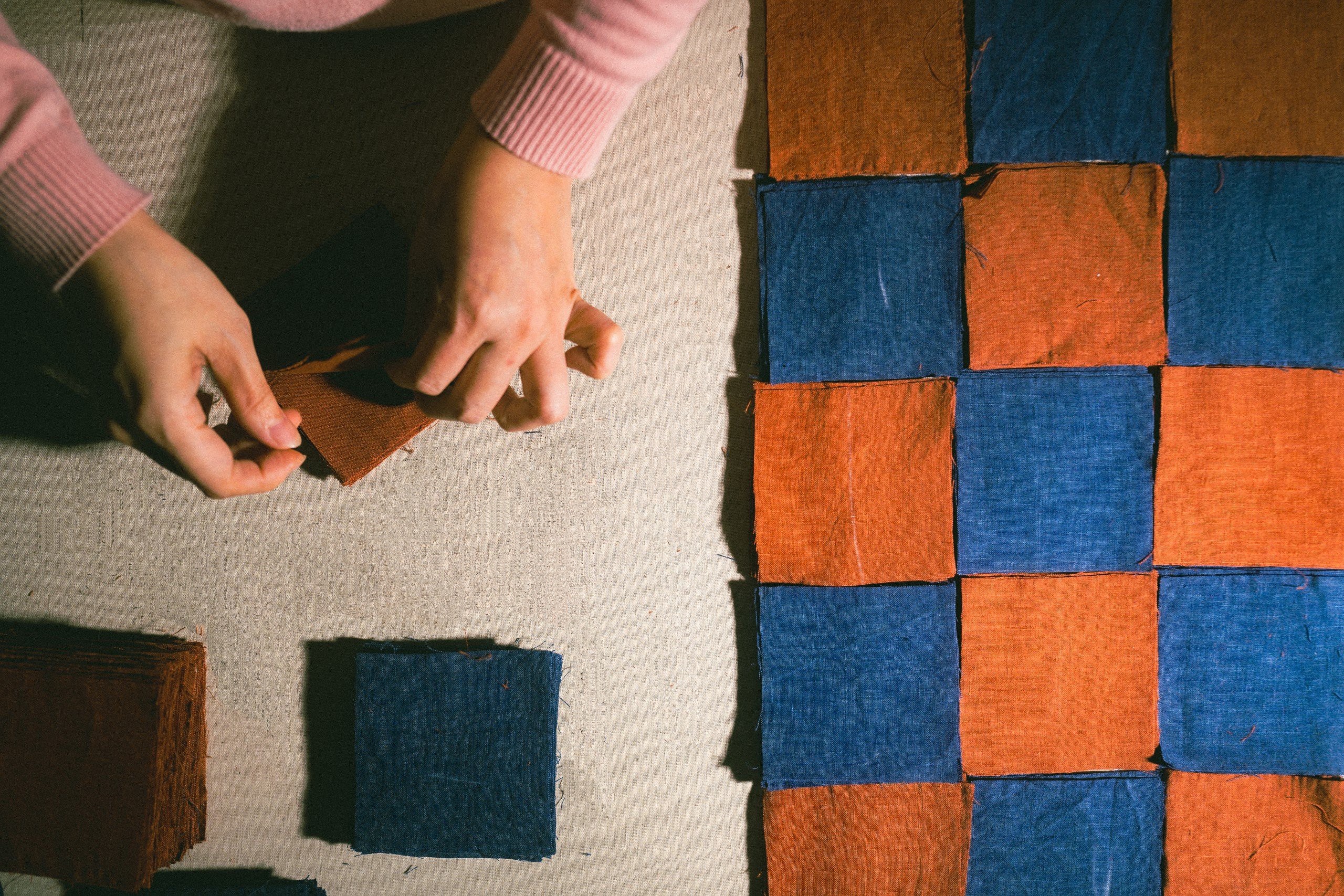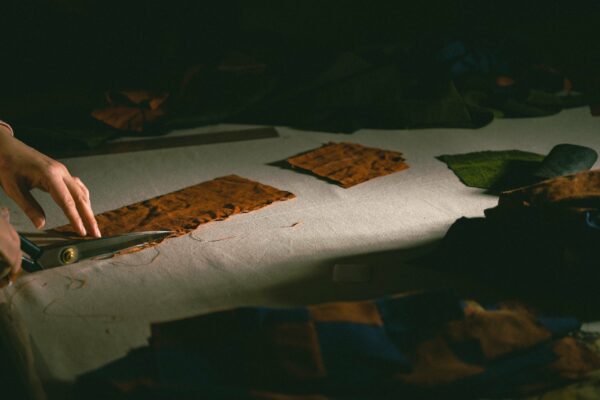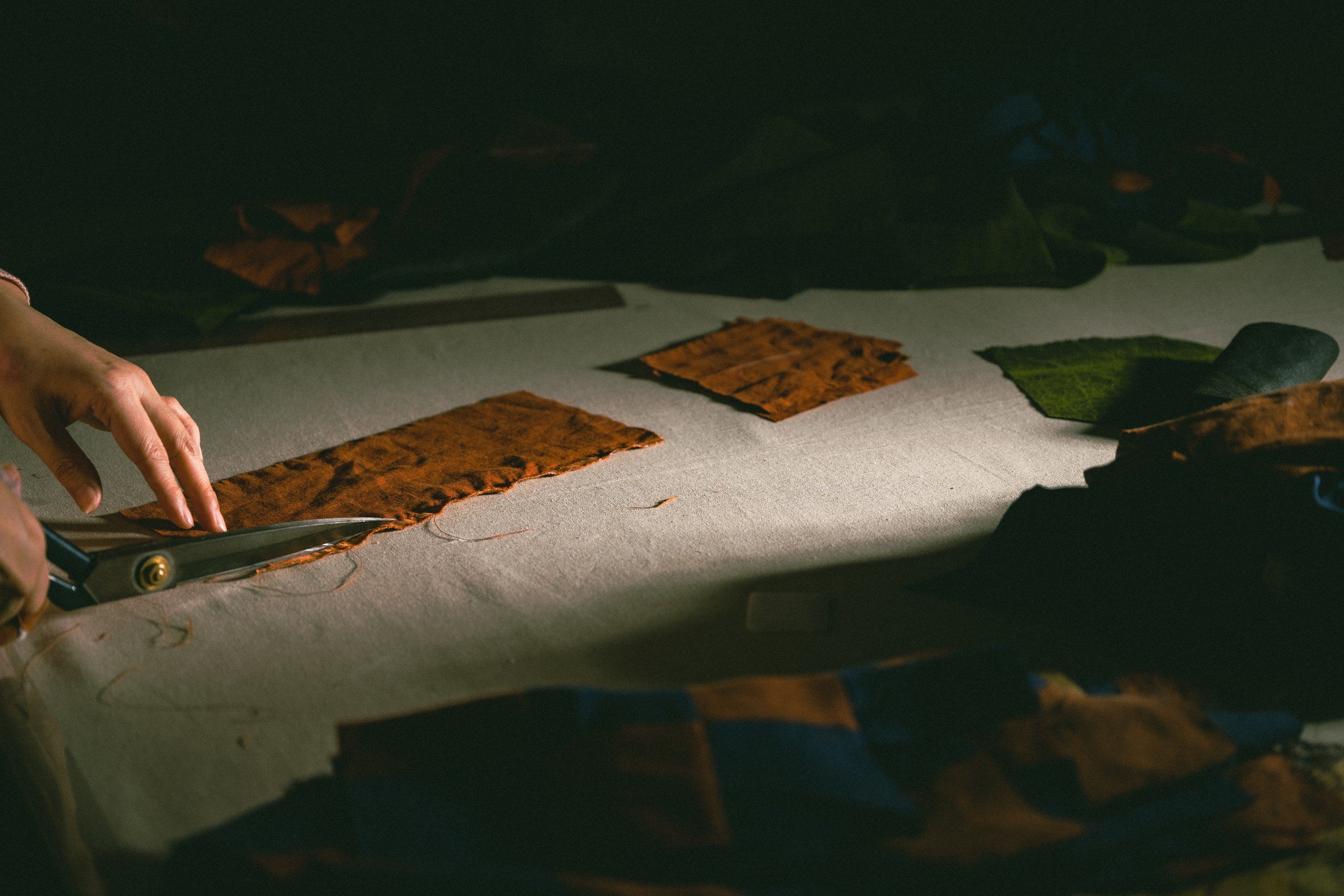
Patchwork, distinct from its close relative quilting, stands as a unique and enduring needlework technique with a rich history. Characterized by the meticulous assemblage of fabric fragments into a unified flat design, patchwork transcends its initial utilitarian purpose to become a versatile medium for artistic expression.

The most prevalent method in Britain, known as “piecing over paper,” exemplifies the meticulous nature of the craft. This technique involves the meticulous transfer of a pre-drawn design onto paper, followed by the precise cutting of fabric pieces to match the outlined shapes. Each fabric fragment is then meticulously folded around the corresponding paper template and temporarily secured with basting stitches. Finally, these prepared pieces are joined together from the reverse side using small, secure “whipstitches.”

While quilting is primarily associated with practical applications like warmth and protection, patchwork finds its historical roots in domestic economy. It served as a resourceful means to utilize leftover fabric scraps, effectively extending the lifespan of garments and minimizing textile waste. Unlike quilting, which occasionally ventured into the realm of professional production, patchwork primarily remained a domestic activity, practiced within the confines of the household.
However, the narrative surrounding patchwork extends beyond mere practicality. Evidence from museum collections suggests that a significant portion of patchwork quilts were crafted with deliberately purchased fabrics, indicative of a more artistic pursuit. These works are attributed to middle-class women who embraced patchwork not out of necessity, but rather for the creative freedom and aesthetic appeal it offered. Additionally, the 19th century witnessed the emergence of a fascinating tradition – military patchwork quilts. These were meticulously sewn by soldiers stationed overseas, offering a glimpse into a practice transcending traditional gender roles.
Museum collections initially focused on the historical and cultural significance of the individual fabric fragments within patchwork pieces, rather than the overall composition. Consequently, these collections offer a fascinating timeline, showcasing the evolution of textile usage. From the luxurious silks and velvets of the 17th and 18th centuries to the mass-produced cottons of the Industrial Revolution, patchwork serves as a tangible record of changing economic realities and textile accessibility.

The 19th century witnessed a significant surge in the popularity of patchwork. Elaborate designs depicting a wide range of motifs adorned bed covers and other The social impact of patchwork extended beyond aesthetics. Prison reformers like Elizabeth Fry advocated for the inclusion of patchwork training within correctional facilities. This initiative provided female inmates with a source of income and an opportunity for introspection. This tradition finds a contemporary echo in the social enterprise “Fine Cell Work,” which collaborated with the V&A museum and inmates of HMP Wandsworth to create a collaborative patchwork quilt.
While the 20th century saw a decline in the widespread practice of patchwork, the 1960s witnessed its revival within the fashion industry. Patchwork transcended its utilitarian roots and became a distinct aesthetic associated with the hippie counterculture movement. By the end of the 20th century, both patchwork and quilting, traditionally viewed as feminine crafts, were embraced by contemporary artists like Tracey Emin and Michelle Walker. These artists utilized these techniques to explore themes of gender roles and the very nature of “women’s art.”
In conclusion, patchwork has journeyed far beyond its initial purpose as a method for utilizing fabric scraps. It has evolved into a sophisticated artistic technique capable of intricate design and profound symbolic expression. Patchwork not only reflects the changing socio-economic landscape but also serves as a versatile platform for creative expression. Today, this time-honored craft continues to inspire artists and holds a significant place within the broader narrative of artistic




Hi, after reading this awesome piece of writing i am
as well happy to share my knowledge here with
friends.